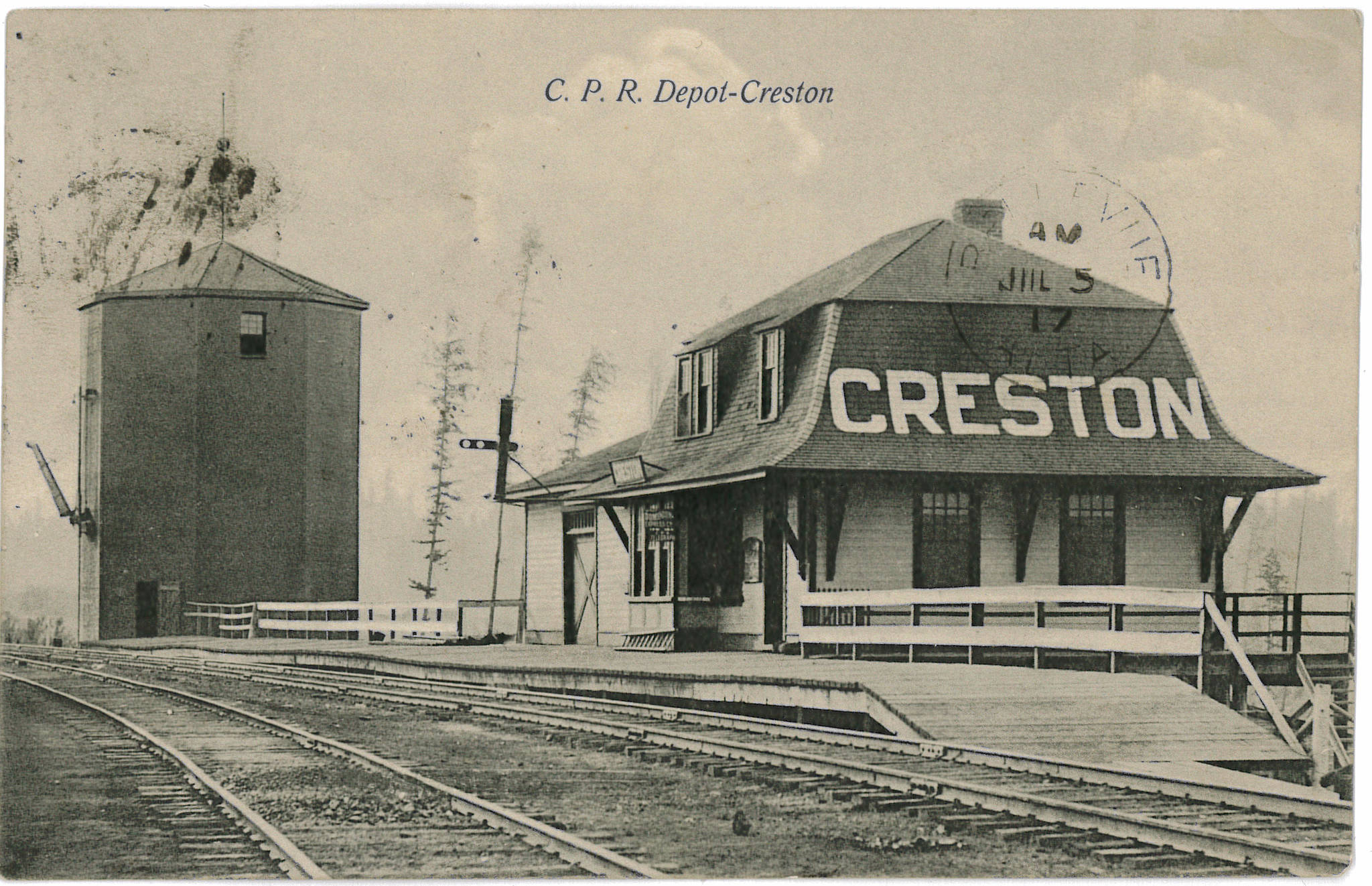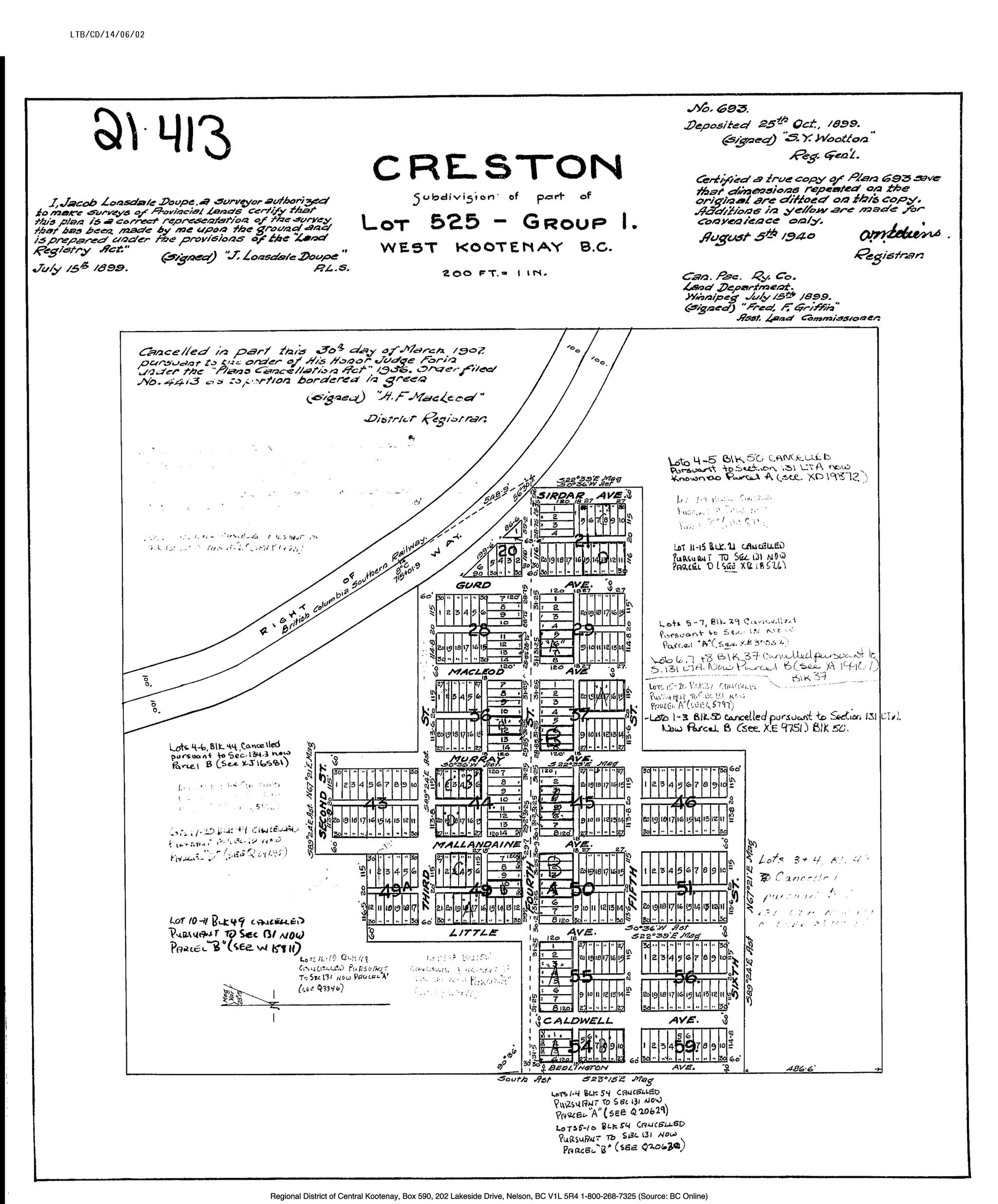A series on West Kootenay/Boundary place names
In our last installment, we began looking at how Creston was briefly renamed Sirdar by the CPR in 1898-99, despite the fact there was already a nearby place by that name.
A series of post office applications caused more confusion. An application for an office called Creston was referred to the postal inspector on Jan. 28, 1899. In his report of Feb. 10, the inspector wrote: “The site of the proposed office has also been known as Fisher and Sirdar. The name of Creston has now, however, been finally decided on and is so described on the railway timetables.”
An accompanying map showed the proposed location was at the south end of Duck Lake — close to the present Sirdar, on the lake’s east side. However, when the office opened on March 1, it was at Creston where we now know it.
Meanwhile, a post office application for Sirdar was referred to the inspector on Dec. 27, 1898. The map showed it at the south end of Duck Lake as well.
In his report of March 10, 1899, the inspector said: “As far as can be ascertained there are no permanent residents at the site of the proposed office. Mr. James Hamilton, who is proposed as postmaster is not at Sirdar, but is living at Creston, 11 miles distant and has been appointed to the postmastership of the office recently established there. It is not probable that there will be any person at Sirdar after the completion of the railway work. The place now known as Creston was formerly called Sirdar. No doubt this application was intended as an application for a post office at the former place.”
So the Sirdar office didn’t open. But a second application for Sirdar was referred to the inspector on Dec. 22, 1899 and a report filed Feb. 5, 1900. This time the map showed Sirdar where it is today. No comment was made about the previous application. The office opened on June 1 with Andrew Skojeski as postmaster.
A barely legible letter in the postal inspector’s letter book from January 1899 reads: “The enclosed petition is sent to the acting inspector for early inquiry and report in connection with the application for an office at Sirdar or Creston, station on the Crows Nest brach, CPR Ry … Creston and Sirdar are apparently identical.”
Fisher and Creston, however, seemed to be slightly different places, judging from a report by E. Odlum to the Vancouver Daily World, published on March 10, 1899: “We arrived at Kootenay Landing and took train for the east. A run of four miles brought us to Sirdar. Here is the beginning of a town. The Clinton Hotel, a new one going up, and other wooden structures are to be seen in the woods and on the lake. Fifteen miles farther and we arrive at Fisher, after passing Creston, where a lot of Italian laborers got off among the woods, where there is much good level land and a fine forest. At Kitchener, nine miles past Fisher, we stop for lunch.”
George Bigelow tried to clarify the situation in the Nelson Tribune on Feb. 3, 1899: “Respecting the nomenclature of Creston Mr. Bigelow explained that the town was first called Creston, but when there appeared to be something to give out a representative of the Canadian Pacific Railway came along and called the place Sidar [sic]. The railway company was so pleased with the outlook that it sent a second man along and he decided to call the place Fisher. The inhabitants of the place rebelled at this indignity, however, as there were no fish in the vicinity save ling and suckers, and even the suckers were scarce. They stuck out for Creston, because Creston meant the top, and they considered themselves top liners in the townsite business.
“They appealed to the Canadian Pacific Railway and the owner of the townsite — F.S. [sic] Little — felt so sore over the matter that he agreed to give the company one half of the townsite, after reserving 20 acres, if it would change the name back to Creston. The company was slow to avail itself of this offer … but in the end it consented and accepted half the townsite and agreed to give the inhabitants back their name.”
The 1899-1900 civic directory, the first to include Creston, listed Little as co-owner of the townsite along with Edward Mallandaine, a civil engineer on the new railway. Mallandaine was also listed as townsite agent. (Mallandaine’s other claim to fame is that he’s the boy in the famous photo of the CPR’s last spike being hammered at Cragellachie in 1885.)
J. Lonsdale Doupe, another CPR land agent, surveyed the original Creston townsite for the company on Lot 525 on July 15, 1899 and deposited it in the land registry on Oct. 25 of that year. The original streets were second through fifth (first was inexplicably omitted) while the avenues were Little, Mallandaine, Murray, Macleod, Gurd, and Sirdar. These names were scrapped in the early 1960s in favour of numbered avenues and streets named after trees. Mallandaine Avenue is now Fifth Avenue.
Sirdar doesn’t appear to have been surveyed until 1907 or 1908, judging by its plan number, although the Regional District of Central Kootenay doesn’t have a copy.
While Creston was indeed briefly renamed Sirdar before becoming Creston again, it’s less clear whether present-day Sirdar was once known as Creston or whether postal authorities were just confused.
What was the CPR thinking in calling the new townsite Sirdar when they already had a siding by that name 19 km away? Did they plan to change the latter’s name? We’ll probably never know.


